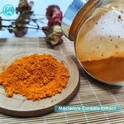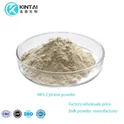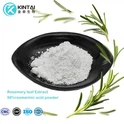Punicalagin is a unique polyphenol compound found abundantly in pomegranates (Punica granatum). As pomegranate powder has gained popularity as a health supplement, understanding the punicalagin content in these products has become increasingly important for consumers. Punicalagin is widely recognized for its potent antioxidant and anti-inflammatory properties, making it a key bioactive component of pomegranates. This article delves into the science behind punicalagin in pomegranate powder, exploring its significance, the nutritional composition of pomegranate powder, factors affecting punicalagin levels, and the potential health implications for consumers.
What is Punicalagin?
Punicalagin is a large polyphenol molecule classified as a hydrolyzable tannin. It is the primary polyphenol found in pomegranates, comprising up to 85% of the total polyphenol content in the fruit (Seeram et al., 2005). Punicalagin is primarily concentrated in the pomegranate peel, but it is also present in the fruit's arils and juice.
Numerous studies have highlighted the potent antioxidant and anti-inflammatory properties of punicalagin. This compound has been shown to scavenge free radicals, inhibit oxidative stress, and modulate inflammatory pathways in the body (Esmaillzadeh & Azadbakht, 2012; Mirmiran et al., 2010). These beneficial effects have led to increased interest in the potential health benefits of punicalagin, particularly in the context of cardiovascular health, diabetes management.
Nutritional Composition of Pomegranate Powder
Pomegranate powder is a versatile and convenient way for consumers to incorporate the nutritional benefits of pomegranates into their diet. This powder is typically made by drying and grinding the whole pomegranate fruit, including the arils, peel, and seeds.
In addition to punicalagin, pomegranate powder is a rich source of other bioactive compounds, such as other polyphenols, vitamins, minerals, and fiber. A study by Mena et al. (2011) found that pomegranate powder contains, on average, 1.5-2.6 g of polyphenols per 100 g of powder, with punicalagin accounting for a significant portion of this.
Compared to pomegranate juice or fresh pomegranate fruit, pomegranate powder generally has a higher concentration of punicalagin and other polyphenols due to the inclusion of the peel, which is a significant source of these compounds (Mirdehghan & Rahemi, 2007). This makes pomegranate powder a more potent and concentrated source of punicalagin for consumers.
Factors Affecting Punicalagin Content
The punicalagin content in pomegranate powder can vary depending on several factors, including the pomegranate variety, cultivation practices, processing methods, and storage conditions.
Pomegranate Variety: Different pomegranate cultivars can have varying punicalagin concentrations. For example, the "Wonderful" variety has been found to have higher punicalagin levels compared to other common pomegranate varieties (Kulkarni & Aradhya, 2005).
Cultivation Practices: Factors such as soil quality, irrigation, and fertilization can influence the punicalagin content in pomegranates. Stress factors, such as drought or extreme temperatures, have been shown to increase punicalagin levels as a defense mechanism in the fruit (Borochov-Neori et al., 2009).
Processing Methods: The way pomegranates are processed into powder can impact the punicalagin content. Gentle drying and milling methods tend to better preserve the punicalagin compared to harsher processing conditions (Qu et al., 2012).
Storage Conditions: Proper storage of pomegranate powder, including temperature, humidity, and light exposure, can help maintain the punicalagin content over time. Prolonged storage or exposure to unfavorable conditions may lead to the degradation of punicalagin (Qu et al., 2012).
Analyzing Punicalagin Levels in Pomegranate Powder
Researchers have employed various analytical techniques to quantify the punicalagin content in pomegranate powder. One of the most widely used methods is high-performance liquid chromatography (HPLC) coupled with ultraviolet (UV) or mass spectrometry (MS) detection (Seeram et al., 2005; Borochov-Neori et al., 2009).
Studies have reported a wide range of punicalagin concentrations in pomegranate powder, typically ranging from 300 to 3,000 mg per 100 g of powder (Mena et al., 2011; Qu et al., 2012). This variability can be attributed to the factors discussed earlier, such as pomegranate variety, cultivation practices, and processing methods.
It is important to note that the reliability of these analytical results depends on the specific methods used and the quality control measures in place. Standardized protocols and reference materials are crucial for ensuring accurate and reproducible punicalagin quantification in pomegranate powder.
Health Implications and Benefits
The potential health benefits of punicalagin consumption have been the subject of extensive research. Numerous studies have demonstrated the compound's potent antioxidant and anti-inflammatory properties, which may contribute to its potential therapeutic applications.
Antioxidant Activity: Punicalagin has been shown to scavenge free radicals, inhibit oxidative stress, and protect cells from damage caused by reactive oxygen species (ROS) (Esmaillzadeh & Azadbakht, 2012). This antioxidant activity may help mitigate the risk of chronic diseases, such as cardiovascular disease and certain types of cancer.
Anti-inflammatory Effects: Punicalagin has the ability to modulate inflammatory pathways by inhibiting the production of pro-inflammatory cytokines and enzymes (Mirmiran et al., 2010). This anti-inflammatory action may have implications for the management of conditions like arthritis, diabetes, and neurodegenerative disorders.
Cardiovascular Health: Studies have suggested that punicalagin may help improve various cardiovascular risk factors, such as blood pressure, cholesterol levels, and endothelial function (Aviram & Dornfeld, 2001; Basu & Penugonda, 2009). Incorporating pomegranate powder rich in punicalagin into the diet may have a positive impact on heart health.
Cancer Prevention: Emerging evidence indicates that punicalagin may possess anti-cancer properties, including the ability to inhibit the growth and proliferation of certain cancer cells (Khan et al., 2012). However, more research is needed to fully understand the potential of punicalagin in cancer prevention and treatment.
Consumer Considerations
When selecting pomegranate powder products, consumers should pay attention to the punicalagin content to ensure they are getting the maximum health benefits. Reading the product labels and looking for third-party certifications or analytical test results can help consumers make informed decisions.
It is important to note that the punicalagin content in pomegranate powder can vary significantly between different brands and batches. Consumers should look for products that provide transparent information about the punicalagin levels, with a preference for those that meet or exceed the levels reported in the scientific literature (typically 300-3,000 mg per 100 g of powder).
Practical Applications and Usage Tips
Pomegranate powder can be easily incorporated into the diet in various ways to maximize the intake of punicalagin and its potential health benefits. Some practical applications and usage tips include:
1. Smoothies and shakes: Adding a spoonful of pomegranate powder to smoothies, yogurt-based drinks, or juices can provide a convenient source of punicalagin.
2. Baked goods: Pomegranate powder can be incorporated into muffins, breads, and other baked goods to enhance their nutritional profile.
3. Sprinkles and toppings: Sprinkling pomegranate powder on cereals, oatmeal, salads, or desserts can make for a simple way to boost punicalagin intake.
4. Supplements: For those seeking a more concentrated source of punicalagin, supplemental forms of pomegranate powder may be an option, but it is essential to follow the recommended dosage guidelines.
Conclusion
Punicalagin, the primary polyphenol compound found in pomegranates, plays a significant role in the health benefits associated with pomegranate powder. Understanding the punicalagin content in these products is crucial for consumers to make informed choices and maximize the potential health advantages.
The available research indicates that pomegranate powder can be a rich source of punicalagin, with concentrations ranging from 300 to 3,000 mg per 100 g of powder. However, various factors, such as pomegranate variety, cultivation practices, processing methods, and storage conditions, can influence the punicalagin levels.
Consumers should seek out pomegranate powder products that provide transparent information about their punicalagin content and choose those that meet or exceed the levels reported in the scientific literature. By incorporating pomegranate powder into their diet, consumers can benefit from the potent antioxidant and anti-inflammatory properties of punicalagin, potentially contributing to improved cardiovascular health, reduced inflammation, and other health outcomes.
As research on the health implications of punicalagin continues to evolve, it is crucial for consumers to stay informed and make informed decisions regarding the selection and consumption of pomegranate powder products. With a better understanding of punicalagin content, consumers can unlock the full potential of this remarkable compound and incorporate pomegranate powder into a healthy, balanced diet.
Our Pomegranate Peel Extract Powder has received unanimous praise from customers. If you would like to know more about this product, please feel free to contact Sales@Kintaibio.Com.
References
Aviram, M., & Dornfeld, L. (2001). Pomegranate juice consumption inhibits serum angiotensin-converting enzyme activity and reduces systolic blood pressure. Atherosclerosis, 158(1), 195-198.
Basu, A., & Penugonda, K. (2009). Pomegranate juice: a heart-healthy fruit juice. Nutrition reviews, 67(1), 49-56.
Borochov-Neori, H., Judeinstein, S., Tripler, E., Harari, M., Greenberg, A., Shomer, I., & Holland, D. (2009). Seasonal and cultivar variations in antioxidant and sensory quality of pomegranate (Punica granatum L.) fruit. Journal of Food Composition and Analysis, 22(3), 189-195.
Esmaillzadeh, A., & Azadbakht, L. (2012). Dietary flavonoid intake and cardiovascular mortality. British Journal of Nutrition, 108(4), 694-697.
Khan, G. N., Gorin, M. A., Rosenthal, D., Pan, Q., Bao, L. W., Wu, Z. F., ... & Honn, K. V. (2012). Pomegranate fruit extract impairs invasion and motility in human breast cancer-derived cells via downregulation of matrix metalloproteinase-9. Integrative cancer therapies, 11(4), 322-332.
Kulkarni, A. P., & Aradhya, S. M. (2005). Chemical changes and antioxidant activity in pomegranate arils during fruit development. Food chemistry, 93(2), 319-324.
Mena, P., García-Viguera, C., Navarro-Rico, J., Moreno, D. A., Bartual, J., Saura, D., & Martí, N. (2011). Phytochemical characterisation for industrial use of pomegranate (Punica granatum L.) cultivars grown in Spain. Journal of the Science of Food and Agriculture, 91(10), 1893-1906.
Mirdehghan, S. H., & Rahemi, M. (2007). Seasonal changes of mineral nutrients and phenolics in pomegranate (Punica granatum L.) fruit. Scientia Horticulturae, 111(2), 120-127.
Mirmiran, P., Fazeli, M. R., Ashtarinezhad, A., Bahadoran, Z., & Azizi, F. (2010). Nutritional and functional properties of pomegranate (Punica granatum L.) pulp. Journal of medicinal plants research, 4(17), 1805-1810.
Qu, W., Breksa III, A. P., Pan, Z., & Ma, H. (2012). Quantitative determination of major polyphenol constituents in pomegranate products. Food chemistry, 132(3), 1585-1591.
Seeram, N. P., Lee, R., Hardy, M., & Heber, D. (2005). Rapid large scale purification of ellagitannins from pomegranate husk, a by-product of the commercial juice industry. Separation and Purification Technology, 41(1), 49-55.







